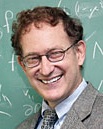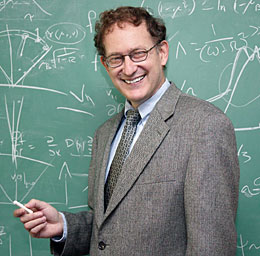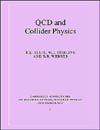| Research
|
Nathaniel Fisch, a Princeton University professor and theoretical physicist at the U.S. Department of Energy's Princeton Plasma Physics Laboratory (PPPL), has persevered in finding novel ways to use plasma waves to produce electric current. Plasma is a hot, ionized gas that serves as the fuel for nuclear fusion. Fisch's patient efforts led to his discovery of new ways of driving current by injecting radio waves into the plasma. These wave-induced currents can enable fusion reactors, called tokamaks, to operate continuously, which is necessary for an economical and practical fusion reactor. PPPL Director Rob Goldston said, "Professor Fisch's analyses of techniques to use radio waves to drive electrical currents in plasmas are as elegant and insightful as they are practical. His theoretical work and close collaboration with the experimentalists opened the way for a wide range of experiments and further analyses, and led to a substantial field of research on current-drive in toroidal plasmas. Indeed, sustainment of currents using radio waves may prove to be an essential ingredient in the steady-state operation of fusion power systems." Fisch specializes in theoretical plasma physics with applications to controlled nuclear fusion, plasma devices, lasers, and astrophysics. In addition to his contributions to the field of plasma physics, he has played an influential role in shaping graduate education in plasma physics. At Princeton University, he is Director of the Program in Plasma Physics, which is widely recognized as one of the world's premier graduate programs in plasma physics. At PPPL, he is Associate Director for Academic Affairs and Head of the Laboratory's Hall Thruster Experiment. On November 8, Fisch will receive one of seven 2004 E. O. Lawrence Awards for his discovery of ways to use plasma waves to produce electric current. He is a Fellow of the American Physical Society and is the author or co-author of more than 200 research papers. He has been granted nine U.S. patents. He received a Guggenheim Fellowship in 1985, the 1992 APS Award for Excellence in Plasma Physics, and a Department of Energy Bronze Medal for Outstanding Mentor 2002. Fisch was born in 1950 in Montreal, Canada. He grew up in Brooklyn, New York City. He studied Electrical Engineering and Computer Science at the Massachusetts Institute of Technology, earning his B.S. degree in 1972, his M.S. degree in 1975, and his Ph.D. degree in 1978.Submitted by DOE's
Princeton Plasma Physics Laboratory |
|||||||||||||||||||||||
|
Fermilab QCD Contributions extend back three decades
The foundation for the 2004 Nobel Prize in Physics that went to David Gross, David Politzer and Frank Wilczek extends back to their own work 1973. But it also extends to many researchers and experiments working to build the field of quantum chromodynamics, including significant contributions from DOE's Fermilab.
Arie Bodek of the University of Rochester won the prestigious 2004 Panofsky Prize in experimental physics "for his broad, sustained, and insightful contributions to elucidating the structure of the nucleon, using a wide variety of probes, tools and methods at many laboratories" including Fermilab.
Fermilab muon scattering experiment E26, running from 1970 to 1974, was an original observer of the "scaling patterns" predicted by QCD. Fermilab theorist Bill Bardeen was among those who "established the standard framework for describing the data," as cited by colleague Chris Quigg.
Fermilab theorist Keith Ellis co-authored "QCD and Collider Physics" in 1996 with Bryan Webber of Cavendish Laboratory, University of Cambridge, and James Stirling, University of Durham. The book is both a graduate-level textbook and a standard reference across particle physics. The 2004 Nobel citation is "for the discovery of asymptotic freedom in the theory of the strong interaction." Gross, Polizter and Wilczek reached the counter-intuitive realization that the strong force actually increases with distance, the opposite of other forces. Thus, the harder we try to pull quarks apart, the tighter the strong force binds them. The strong force ebbs only at small distances, such as those within the proton. One of the papers listed in the Nobel citation was a Fermilab publication submitted with Wilczek in July 1973 while Gross was visiting Fermilab (which at the time was still called the National Accelerator Laboratory). The paper was subsequently published in Physical Review D . "It is important to note that this work was done 30 years ago, which means we have to make investments now for 30 years hence," said Fermilab's Ellis." This is the reason that funding for the sciences should be beefed up."Submitted by DOE's Fermilab |






